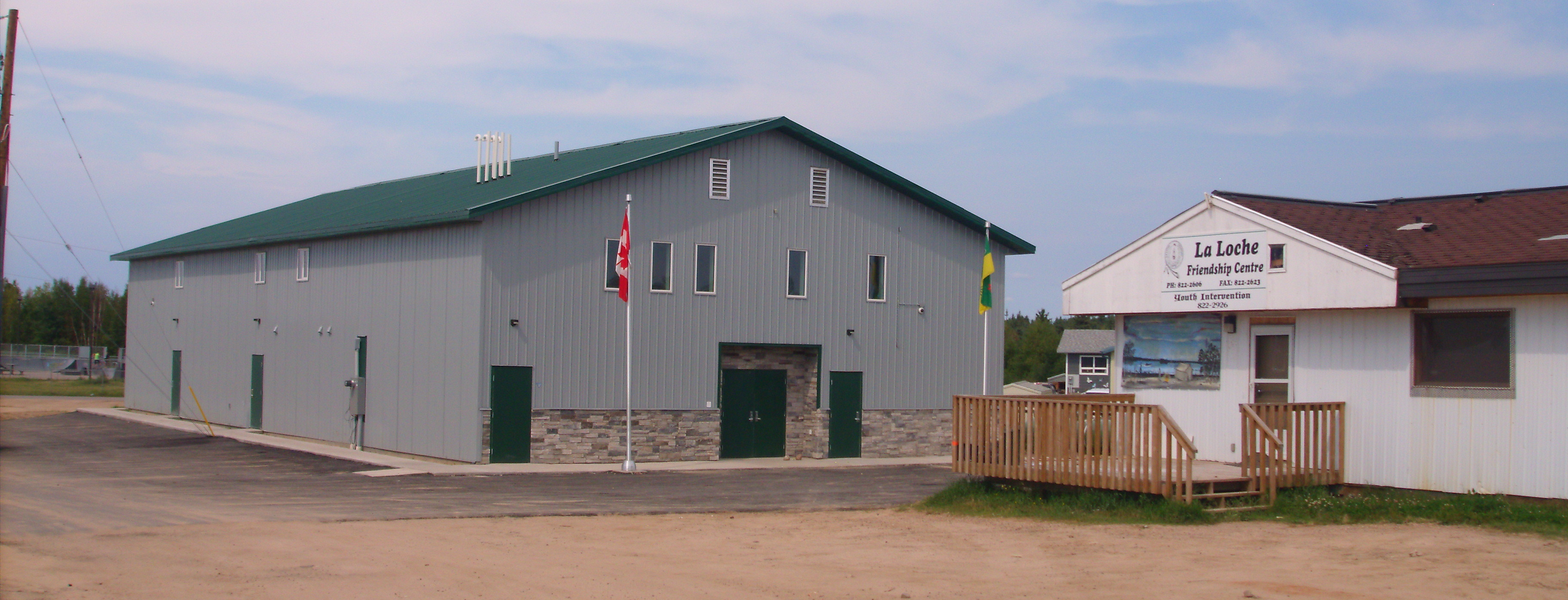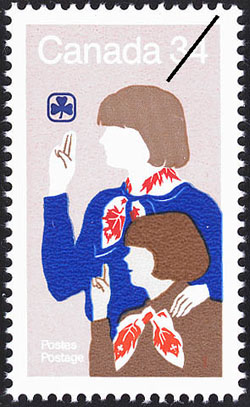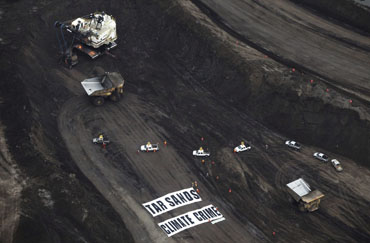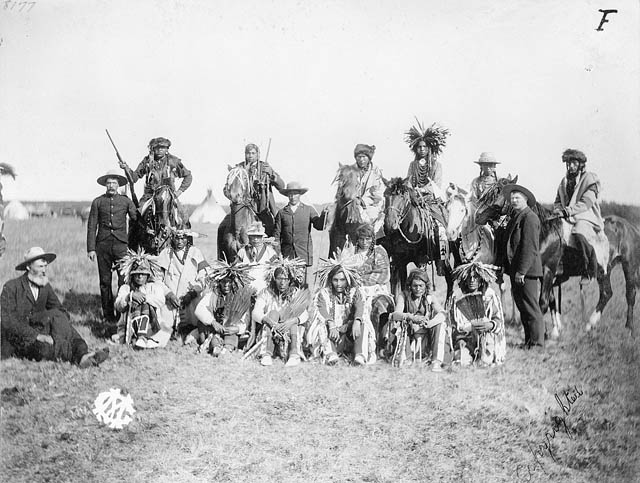Browse "Organizations & Movements"
-
Article
Fédération nationale Saint-Jean-Baptiste
The Fédération nationale Saint-Jean-Baptiste (FNSJB) was at the centre of key movements that shaped contemporary feminism. With roots in both maternalism (based on caring for others) and equality between women and men (but in the context of the specific role attributed to women in society), the Fédération waged battle on two main fronts: for equal legal rights and suffrage, and for the protection of mothers and their families. In doing so, it helped to bolster the government’s prerogatives, particularly with regard to the social policies that underpinned Québec’s welfare state from the 1920s on. The FNSJB was part of the process of women’s individuation, a crucial period in the advancement of women’s status in the 20th century.
"https://d2ttikhf7xbzbs.cloudfront.net/media/media/fdc7eaec-0a00-4c7c-ac55-6a279b89083b.jpg" // resources/views/front/categories/view.blade.php
https://d2ttikhf7xbzbs.cloudfront.net/media/media/fdc7eaec-0a00-4c7c-ac55-6a279b89083b.jpg
-
Article
Fenians
Fenians were members of a mid-19th century movement to secure Ireland’s independence from Britain. They were a secret, outlawed organization in the British Empire, where they were known as the Irish Republican Brotherhood. They operated freely and openly in the United States as the Fenian Brotherhood. Eventually, both wings became known as the Fenians. They launched a series of armed raids into Canadian territory between 1866 and 1871. The movement was primarily based in the United States, but it had a significant presence in Canada.
"https://d2ttikhf7xbzbs.cloudfront.net/media/media/a4c521f1-90fe-495e-9550-39952e8e3d07.jpg" // resources/views/front/categories/view.blade.php
https://d2ttikhf7xbzbs.cloudfront.net/media/media/a4c521f1-90fe-495e-9550-39952e8e3d07.jpg
-
Article
Francophonie and Canada
The term francophonie has been in common use since the 1960s. It has several meanings. In its most general sense, it refers to all peoples and communities anywhere in the world that have French as their mother tongue or customary language. The term can also refer to the wider, more complex network of government agencies and non-government organizations that work to establish, maintain and strengthen the special ties among French-speaking people throughout the world. Lastly, the expression “La Francophonie” is increasingly used as shorthand for the Organisation internationale de la Francophonie (International Organisation of La Francophonie).
"https://d2ttikhf7xbzbs.cloudfront.net/media/media/5a849720-0aa9-4516-a19a-0b599bde2bc2.png" // resources/views/front/categories/view.blade.php
https://d2ttikhf7xbzbs.cloudfront.net/media/media/5a849720-0aa9-4516-a19a-0b599bde2bc2.png
-
Article
Freemasonry
Changing economic and religious conditions after the Gothic period brought a decline in majestic building projects, and by the 17th century, lodges could stay alive only by supplementing the membership of working ("operative") masons with nonmasons ("accepted masons").
"https://d2ttikhf7xbzbs.cloudfront.net/media/media/9cd311ef-e60d-424e-853c-2d818079595a.jpg" // resources/views/front/categories/view.blade.php
https://d2ttikhf7xbzbs.cloudfront.net/media/media/9cd311ef-e60d-424e-853c-2d818079595a.jpg
-
Article
French Canadian Nationalism
French Canadian nationalism concerns a wide variety of manifestations of the collective will of much of Canada's French-speaking population to live as a distinct cultural community. Its innumerable ramifications have been not only cultural but also political, economic and social.
"https://d2ttikhf7xbzbs.cloudfront.net/media/media/04c5cf2b-940f-4410-b1a6-fa7105c8b99e.jpg" // resources/views/front/categories/view.blade.php
https://d2ttikhf7xbzbs.cloudfront.net/media/media/04c5cf2b-940f-4410-b1a6-fa7105c8b99e.jpg
-
Article
Friendship Centres
Friendship Centres are non-governmental agencies that provide various programs and services to urban Indigenous peoples. As of 2017, the National Association of Friendship Centres represents 118 Friendship Centres nationwide.
"https://d2ttikhf7xbzbs.cloudfront.net/media/media/e6cd3337-c70a-4ec4-b6fb-6ab9d67dab41.jpg" // resources/views/front/categories/view.blade.php
https://d2ttikhf7xbzbs.cloudfront.net/media/media/e6cd3337-c70a-4ec4-b6fb-6ab9d67dab41.jpg
-
Article
Front de libération du Québec (FLQ)
The Front de libération du Québec (FLQ) was a militant Quebec independence movement that used terrorism to try and achieve an independent and socialist Quebec. FLQ members — or felquistes — were responsible for more than 200 bombings and dozens of robberies between 1963 and 1970 that left six people dead. Their actions culminated in the kidnapping of British trade commissioner James Cross and the kidnapping and subsequent murder of Quebec cabinet minister Pierre Laporte, in what became known as the October Crisis.
"https://d2ttikhf7xbzbs.cloudfront.net/media/new_article_images/FLQ/EC_2012-07-30.b1_IMG_0003-V.2 (1).jpg" // resources/views/front/categories/view.blade.php
https://d2ttikhf7xbzbs.cloudfront.net/media/new_article_images/FLQ/EC_2012-07-30.b1_IMG_0003-V.2 (1).jpg.jpg)
-
Article
Gender Equity
The term “gender equity” refers to the belief that individuals of different genders require different levels of support to achieve true equality.
"https://d2ttikhf7xbzbs.cloudfront.net/media/new_article_images/Gender/IISC_EqualityEquity.png" // resources/views/front/categories/view.blade.php
https://d2ttikhf7xbzbs.cloudfront.net/media/new_article_images/Gender/IISC_EqualityEquity.png
-
Article
Girl Guides
The branches of the Guiding movement include Sparks, Brownies, Guides, Pathfinders, Rangers, Cadets and Junior Leaders, with groups in most communities in every province and territory, under the leadership of women volunteers and community leaders.
"https://d2ttikhf7xbzbs.cloudfront.net/media/media/42ace98b-c059-4c53-9a75-cfa5b0f0cd90.jpg" // resources/views/front/categories/view.blade.php
https://d2ttikhf7xbzbs.cloudfront.net/media/media/42ace98b-c059-4c53-9a75-cfa5b0f0cd90.jpg
-
Article
Great Awakening
Great Awakening, New England-based movement of religious revivalism and evangelical pietism which came to Nova Scotia in 1775 with Henry ALLINE's decision to preach; it subsequently spread across the Maritimes. The religious currents which produced it were international and at least a century old.
"https://development.thecanadianencyclopedia.ca/images/tce_placeholder.jpg?v=e9dca980c9bdb3aa11e832e7ea94f5d9" // resources/views/front/categories/view.blade.php
https://development.thecanadianencyclopedia.ca/images/tce_placeholder.jpg?v=e9dca980c9bdb3aa11e832e7ea94f5d9
-
Article
Greenpeace
Greenpeace originated in Vancouver (1971) as a small group opposed to nuclear testing in the Pacific, and has blossomed into one of the largest and best-known environmental organizations in the world
"https://d2ttikhf7xbzbs.cloudfront.net/media/media/64feb677-242f-4d38-ab58-3f395ec78593.jpg" // resources/views/front/categories/view.blade.php
https://d2ttikhf7xbzbs.cloudfront.net/media/media/64feb677-242f-4d38-ab58-3f395ec78593.jpg
-
Article
Gustafsen Lake Standoff
The Gustafsen Lake Standoff was a month-long conflict (18 August–17 September 1995) between a small group of First Nations Sun Dancers and the Royal Canadian Mounted Police (RCMP). The standoff took place in central British Columbia, in Secwepemc (Shuswap) territory near 100 Mile House. Sparked by a dispute between a local rancher and a camp of Sun Dancers over access to private land for ceremonial purposes, the armed confrontation raised larger questions of Indigenous land rights in British Columbia. On 11 September 1995, in what was later called the largest paramilitary operation in the history of the province, RCMP surrounded the remote camp and a firefight erupted during which, remarkably, no one was seriously injured. The standoff at Gustafsen Lake is perhaps the least known in a series of localized armed conflicts involving Indigenous peoples in the 1990s that included the Oka and Ipperwash crises in Quebec and Ontario, respectively.
"https://d2ttikhf7xbzbs.cloudfront.net/media/media/a91c62c3-627d-4cbc-bc37-75fe1f9ee255.jpg" // resources/views/front/categories/view.blade.php
https://d2ttikhf7xbzbs.cloudfront.net/media/media/a91c62c3-627d-4cbc-bc37-75fe1f9ee255.jpg
-
Article
Hippies in Canada
“Hippies” is a term used to describe young people who participated in the 1960s counterculture movement, which originated in the United States and spread throughout Canada in the second half of that decade. As a noun, “hippie” was a play on the adjective “hip,” which was used to describe young bohemians who lived in Greenwich Village in New York City, and in San Francisco, in the 1950s and early 1960s. Hippies were part of the “baby boom” generation, born immediately following the end of the Second World War (see Baby Boomers in Canada). This demographic wave was significant enough to transform Canadian society; by the mid-1960s more than half of Canada’s population of 20 million was under the age of 25.
"https://d2ttikhf7xbzbs.cloudfront.net/media/new_article_images/HippiesinCanada/VW_Van_Hippies_British_Columbia.jpg" // resources/views/front/categories/view.blade.php
https://d2ttikhf7xbzbs.cloudfront.net/media/new_article_images/HippiesinCanada/VW_Van_Hippies_British_Columbia.jpg
-
Article
Hospitallers of St Joseph
Various movements arose in the 20th century to unite the nuns who could trace their origins to La Flèche: in 1953 the American and Canadian convents became one congregation, which the French congregations then joined in 1965. The generalate is in Montréal.
"https://development.thecanadianencyclopedia.ca/images/tce_placeholder.jpg?v=e9dca980c9bdb3aa11e832e7ea94f5d9" // resources/views/front/categories/view.blade.php
https://development.thecanadianencyclopedia.ca/images/tce_placeholder.jpg?v=e9dca980c9bdb3aa11e832e7ea94f5d9
-
Article
Hunters' Lodges
Based on the Lower Canadian Frères Chasseurs, Hunters’ Lodges were American secret societies that aimed to liberate the Canadian colonies from the tyranny of British thralldom. With estimates ranging from 15,000 to 200,000 members, lodges counted on much support from borderlanders, from Maine to Wisconsin, who were disillusioned and frustrated with the social, economic and political changes that shook 1830s America. Though they failed to liberate Canada, losing key military encounters near Prescott and Windsor in November and December 1838, their importance was significant enough that they had forced the American president, Martin Van Buren, to send a military force to the American-Canadian border to ensure that the neutrality between the United States and Britain was strictly followed. For months, Hunter activities dominated American foreign and internal policy.
"https://d2ttikhf7xbzbs.cloudfront.net/media/media/24c5665d-60e0-424c-86f4-96cf5b7d75c1.jpg" // resources/views/front/categories/view.blade.php
https://d2ttikhf7xbzbs.cloudfront.net/media/media/24c5665d-60e0-424c-86f4-96cf5b7d75c1.jpg
